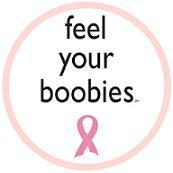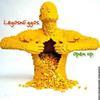
“Tumor” is a scary word. It is especially frightening when used in the same sentence as my child’s name. I much prefer “cyst” or “abnormality” than “tumor,” but tumor is what we’ve been told.
This post is written as a PSA for women — all women, young included — to perform >> breast self-exams (BSEs) << on a regular basis.
“Women in their 20s and 30s should have a clinical breast exam (CBE) as part of a periodic (regular) health exam by a health professional, at least every 3 years. After age 40, women should have a breast exam by a health professional every year.
Breast self exam (BSE) is an option for women starting in their 20s. Women should be told about the benefits and limitations of BSE. Women should report any breast changes to their health professional right away.” — American Cancer Society recommendations -- www.cancer.org
For women, starting as young as age 16 and throughout your twenties, what you feel on that self-exam might not be only an inflammation, a cyst or a swollen mammary gland, or just swelling around the time of your period that you would just forget about until next month. If you ever notice a lump at all — painful or not — that does not go away by the week after your menstrual cycle, then you should be examined soon by a doctor and possibly undergo ultrasound in order to determine the nature of your lump. I’m thankful my daughter did not put hers off.
In her case, she discovered a painful tumor (not a cyst) that grew swiftly over a few months to the point that she could no longer rest her arm at her side without discomfort. This is abnormal in a young woman. Her lump resulted in a biopsy this morning, from which we are awaiting results. She is in her 20s and in excellent health.
The doctor obtained a good specimen “sucked” from her “meatball” this morning, and we will get the results early next week. Although, he assured us that tumors in young women are almost always benign, and we are not to worry. We are trying not to do that.
If you detect a lump, please do not put off your exam. It is not fun, the procedures genuinely suck, and doctors’ waiting rooms are indeed a pain, but good health is something that takes some attention, a little extra time, and regular maintenance.
If you have a grown daughter, encourage her to check herself often and thoroughly for any abnormal lumps or masses and for pain in and around the breast and armpit that is not associated with her period and that does not subside according to her menstrual cycle. Like me when I was younger, she might find that it is just a fibrotic cyst due to excessive caffeine intake, but what if it is not? Regardless, a doctor should determine the problem through further examination. Better to be proactive than reactive, right?
When do you perform a breast self-exam? One week after your period, on a monthly basis.
How do you perform a breast self-exam? Take a look and follow >> these 5 simple steps. <<
A monthly BSE could save your life. Again, encourage your daughter to do the same. I’m certainly glad my daughter found her lump and followed up on it right away. Even though she’s sore this afternoon after her biopsy (which was minimally invasive), she’s a trooper and already back at work and breathing easier.
(As her mom, I’ll just hold my breath until the results on Monday.)
For more information on breast self-exam awareness, go to FeelYourBoobies.com.
Like Be the first one who likes this post! &post;&email;
&post;&email;

